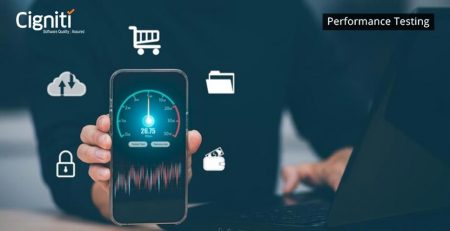5 Effects of Poor Performance that E-Commerce Companies Need to Be Aware Of
Millennials are moving into their prime spending years, a fact that implies great consequences for many business entities. Millennials are a generation vastly different from their predecessors, most notably because of their lifestyle. A generation born with the birth of modern computers, they have transformed with digital technology. Perhaps this generation will stand out for a long time to come, because they have an idea about how life without technology would have been, and realize the true impact of technological advancement. Most of this generation gives value to the experience of a product, rather than consider the product’s history or future.
Statistics show that end-users are increasingly spending more time with online retail on their mobile phone devices, rather than desktops/laptops. Consumers are spending as much as 73% of their time researching a product from their smartphone and 70% of the time checking and assessing the associated price of the item. In addition, a significant number of mobile users prefer using mobile applications rather than mobile websites. According to Forrester [Source: Forrester Research survey Q4 2015, 825 U.S. smartphone owners], a whopping 47% of users said that they preferred using mobile applications, rather than mobile websites. 36% said that they would be neutral, with only 17% actually saying that they preferred mobile websites over mobile applications.
[Tweet “According to @Forrester, a whopping 47% of mobile users said that they preferred using #MobileApps, rather than mobile websites.”]
Statistics from PayPal and Ipsos show that when it comes to international purchases, majority of the users looked at security as their most important feature. 54% [Source: PayPal and Ipsos] of the users shopping using cross-border payment looked for a “Safer way to pay” as their priority. It is imperative that, for this security-wary and experience-seeking generation, businesses must strive and compete with one another to gain their attention and sustain it. If businesses fail to capture this segment of buyers’ interests, they would lose them as a customer base, as these millennials would move on to competitors without batting an eyelid.
5 Effects of Poor Performance
Poor performance of websites and mobile applications infuriate the end-users and put a dent in organizational expenditure. With consumers having spent a significant time researching and comparing a product with its competitors, there is a general rise in awareness about most products. In the present scenario, a good brand is expected to have a fully-functioning website, accurate information, and should be able to provide its users the option of interconnectivity through various electronic devices, by providing an exclusive website and having trusted payment gateways. The quality of the service or product is, hence, tied to its online or app-based (or both) performance. In case of poor performance of a website or a mobile application, it would affect business in the following 5 ways:
- Increased bounce rate: When a website is not up to the mark, or lacks clarity in any form, website visitors navigate away from the website, unimpressed by its inefficiency. This leads to a sharp increase in the percentage of visitors that navigate away from the page after browsing just the first page.
- Reduces conversion: Website visitors looking to purchase the product, who were drawn to the website because of advertising, will eventually end up not purchasing the product, owing to the fact that their attention was simply not kept arrested until after the completion of the purchase. Hence, there is a definite reduction in the conversion rate.
- Slow load time: Customers are not willing to wait. Had they wanted to persevere through an endless queue, they might have stuck to hovering by brick-and-mortar stores. Slow load time defeats the sole purpose of having the convenience of shopping whenever you want, for whatever you want. In addition, this reflects badly on the website maintenance, eventually driving away existing and potential users.
- Lose business to competition: A gross majority of users who are dissatisfied with a company’s website will go somewhere else to shop next time; there is rarely ever a second chance of being able to once again attract customers. There are many options among most businesses today, and customers are well-informed about them.
- Leaves mobile applications redundant: With multiple app crashes, functionality glitches, and general inconsistencies, customers become intolerant of inefficient mobile applications that do not perform as claimed. These cases of poor performance among mobile applications would result in customers uninstalling the application in an instant.
Why Testing is Imperative
Often, in the event of shortage of time in a software lifecycle, testing would get the axe, and it is either tremendously negated, or altogether forgone. Naturally, the consequences are often dire. Businesses now have a direct interface for interaction with their end-users. Customers often take to social media platforms to bash brands that have caused them excessive trouble. As one cannot put a price on lost brand loyalty and negative branding, this is an inherent loss to the organization. More importantly, it quickly translates to loss in revenue, lowered brand equity, and eventually, falling of stock prices.
[Tweet “Performance Engineering helps resolve technical #glitches, and predict what issues may arise, and detects possible #performance issues.”]
Load testing is vital for websites and applications alike. The sheer volume of users and the different kinds of transactions performed through an application would result in heavy load at some point, like during the release of a product or during an e-commerce sale. Often, outages and server downtimes cannot be altogether avoided, as there are multiple intertwined factors involved. However, through constantly testing until breaking point, load testing and stress testing help applications prepare to resolve downtime issues and website traffic issues within a much shorter span of time.
With more organizations operating in the agile mode, through Shift-Left Quality Engineering, Quality Assurance is being made an integral part of the software lifecycle. As a result, testing is now iterative and is being widely acknowledged for the significance it holds in software development. This iterative and simultaneous concept of testing brings in the concept of performance engineering. Performance engineering plays a key role in not just resolving technical glitches, but also in predicting what issues may arise, thus preparing developers and testers alike for possible cases of performance failure.
In Conclusion
Cigniti Technologies delivers a whole array of solutions in performance testing to its customers, by utilizing frameworks that were specifically designed after numerous years of study by its skilled testers. Cigniti’s Performance testing Services are intended to meet your requirements at any given phase of the software development lifecycle, and help target and resolve defects related to performance early on in the project’s development lifecycle.
Cigniti has expertise across industries and through multiple platforms. In addition, Cigniti has also assembled a committed Performance Testing Center of Excellence, so as to produce multiple performance testing value creators. Our performance testing advisors have an in-depth understanding of networks, systems, and the software architecture.





Comment (1)
Very Informative. No matter how good mobile apps feature might be, users will lose interest if it is performing poorly with crashes or delayed load time. Your app should be able to withstand peak load, perform under lower network bandwidth and should not affect battery performance.
Cheers Jack!